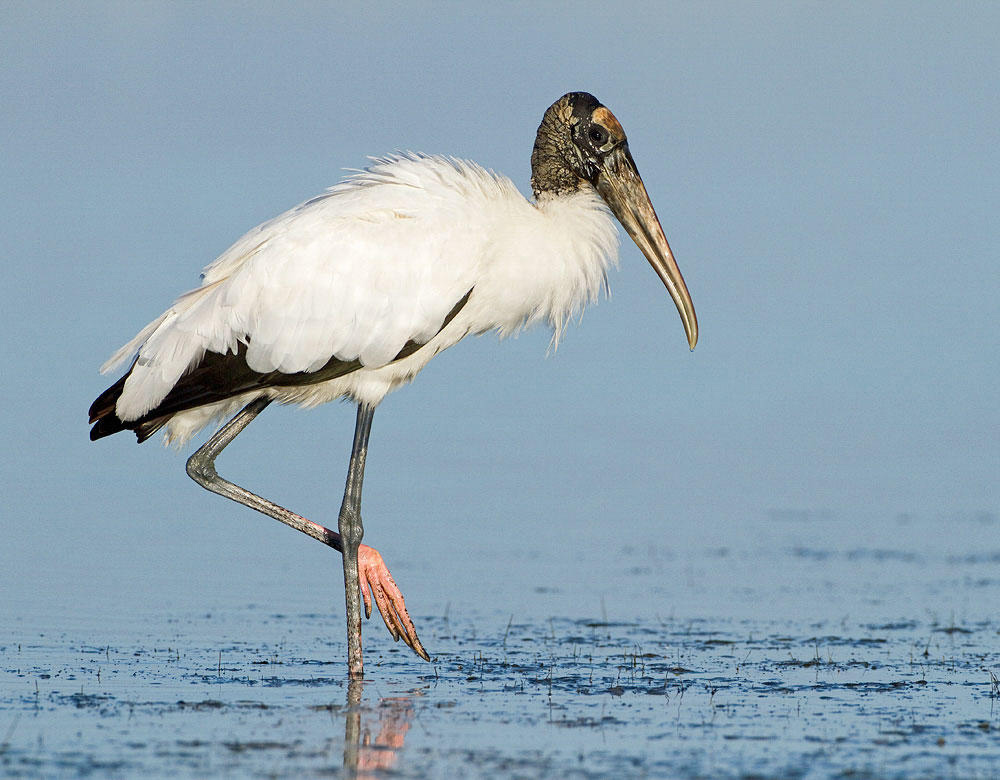
Wood Stork. Photo: Roger Williams/Audubon Photography Awards
Stripping clean water protection will impact key waterways that are critical to birds and people
December 12, 2018 - WASHINGTON - The Trump Administration on Tuesday released a draft rule that dramatically reduces the number of wetlands and streams that are protected under the 1972 Clean Water Act. If finalized, the rule would exempt from protection some streams and wetlands that are only wet for part of the year, from Clean Water Act protections. Examples are below.
“Today’s announcement represents a striking roll-back of protections for some of America’s most important bird hotspots,” said Julie Hill-Gabriel, Vice President of Water Conservation at the National Audubon Society. “The streams and wetlands that this rule would exclude from the Clean Water Act make up important habitat for desert nesting birds, marsh birds, and wading birds. Even if it sometimes dries up or is disconnected from tributaries by land, dikes, or other features, these water bodies are still streams or wetlands as far as birds and other wildlife are concerned.”
- Wetlands and streams in the West are typically dry for part of the year. But these water resources remain critically important to desert nesting birds like the Bell’s Vireo that rely on them for shelter, feeding and nesting in an otherwise arid landscape. The new rule’s focus on protecting only permanent flow could result in a disproportionate impact in arid West states than other states.
- In the Great Lakes, many wetlands systems consist of wet mesic forests, such as those at Belle Isle, Wigwam Bay and the Maple River in Michigan. For many wetland birds, such as Rusty Blackbirds and Prothonotary Warblers, this dynamic feature is absolutely critical for their survival; while never fully saturated these moderately moist environments provide irreplaceable habitat.
- Wood Storks and Roseate Spoonbills in the Everglades rely on wetlands that fill with water in the wet season, allowing forage fish to grow and thrive. It is exactly when the water levels become low, though, that birds can successfully access those small forage fish, which are a vital food source. These kinds of wetlands that are not flooded year round are frequently targeted for development. The new rule will make it that much easier to develop this important habitat, increasing wildfire risks and water quality impacts while adding further stresses on birds that are already under pressure from the multiple effects of a changing climate.
Protecting and restoring wetlands are a priority for Audubon. About one-third of North American bird species including the Bald Eagle, Wood Stork, American Bittern, and Prothonotary Warbler use wetlands for food, shelter, or breeding. Wetlands also filter pollution and provide drinking water for more than 117 million Americans. “People say it all the time – water is life,” added Hill-Gabriel. “This short-sighted rule puts birds and clean water at risk. But Audubon will continue to fight to protect and restore America’s most iconic landscapes.”
Read Audubon’s letter to the EPA about this rule from March 2018 here: https://www.audubon.org/sites/default/files/audubon_wotus_letter_final_8-13-2018.pdf.
Learn more about Audubon’s efforts to protect America’s waters at https://www.audubon.org/water.
The National Audubon Society protects birds and the places they need, today and tomorrow, throughout the Americas using science, advocacy, education and on-the-ground conservation. Audubon’s state programs, nature centers, chapters and partners have an unparalleled wingspan that reaches millions of people each year to inform, inspire and unite diverse communities in conservation action. Since 1905, Audubon’s vision has been a world in which people and wildlife thrive. Audubon is a nonprofit conservation organization. Learn more at www.audubon.org and @audubonsociety.
Source: National Audubon Society
Related Information: EPA and Army Propose New "Waters of the United States" Definition









